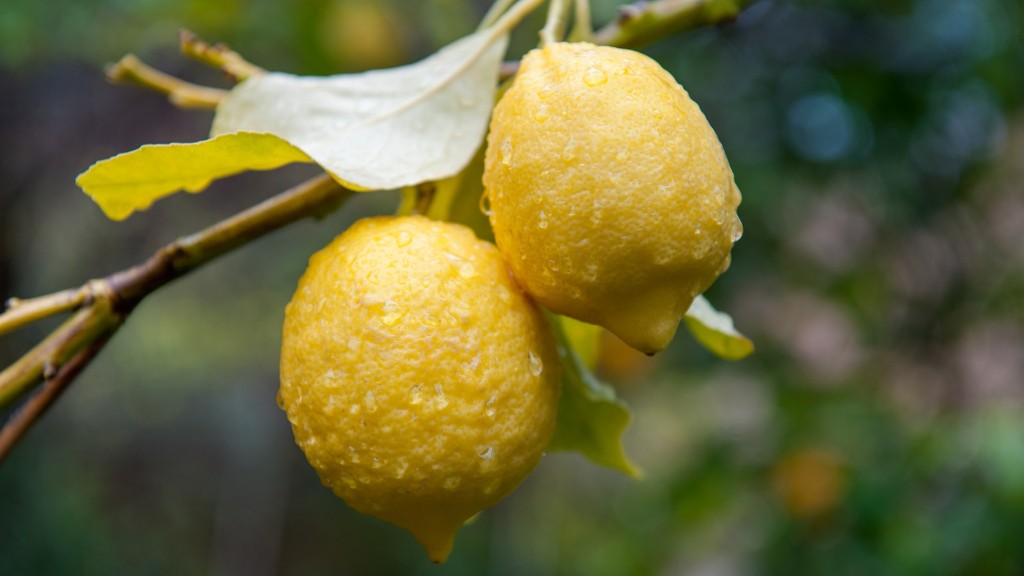Pollination of an indoor lemon tree requires special techniques to ensure successful fertilization of the flowers and production of the fruit. It is important to understand the process and techniques required for successful pollination and then to regularly maintain the tree for optimal productivity. By following these steps, you can learn how to properly pollinate your citrus trees.
First, determine the best time to pollinate. Lemon trees are usually in bloom during the spring and summer. During this time, most trees will have plenty of flowers present, so it is important to take advantage of the optimal conditions. Pollen is best spread when the temperature is between 60 and 80°F and when there is no wind present. Therefore, avoid pollinating the tree when temperatures are outside this range or when windy weather might disrupt the process of the pollination.
Then, you need to prepare to pollinate the flowers. This can be done by either using a soft, gentle brush to transfer the pollen from flower to flower; or by using a cloth to collect the pollen from the open flowers and to then transfer it to the flowers that are closed or still in bud. Watering the tree and misting of pollen can also be carried out before and during pollination, which can help raise the humidity levels and make the pollen stick better.
Next, you need to inspect the flowers of yourtree. All the open flowers should be inspected and checked for the presence of mature pollen. If the flowers show any signs of aging or discolouration then avoid pollinating them. Additionally, when you notice two open flowers with mature pollen on the tip of the stamen, then you can assume that the flower has been pollinated and does not need to be pollinated again.
Afterwards, you will want to actually begin the pollination process. Whether you are using a cloth to transfer the pollen directly or a brush to deposit the pollen, this must be done as lightly as possible. Hold the flower on one side and carefully brush the pollen onto the head of the pistil. Repeat this for every open flower and then move onto the flowers that are still in bud.
Additionally, you need to continually monitor the overall health of the tree. Regularly inspect the flowers of each of the branches to ensure they are blooming and in good health. Monitor the progress of any flowers that are in bud, to ensure they are developing correctly..
Finally, keep in mind that pollinating your indoor lemon tree is an ongoing process. Ensure that the relative humidity is reasonably high to ensure the successful pollination of flowers. If the humidity levels become too low then the pollinating process must be repeated more frequently. Once your tree has reached maturity, it is important to check the flowers regularly and to apply the techniques of pollinating again and again, in order to ensure your indoor lemon tree produces a good harvest.
Pollination Techniques
Pollination of indoor lemon trees requires specific techniques to ensure that fertilization of flowers is successful, resulting in the production of fruit; so, understanding how to pollinate properly is imperative. Determining the best time to pollinate is the first step. This will be when the tree is in full bloom and when the temperature is within the range of 60 to 80°F and there is no wind present. To prepare for pollinating, sometimes various methods can be used. Collecting the pollen from open flowers and transferring them to the ones that are still in bud is one way. Alternatively, a soft, gentle brush may be used to transfer pollen from one flower to another. To ensure successful pollination, the flowers should be inspected and regularly monitored. Serious consideration needs to be given to the humidity level to ensure successful pollination.
Best Pollinating Conditions
To optimize pollination, the conditions must be just right. Appropriate temperatures need to be met; when it is too hot, the pollen may become too dry and prevent successful pollination. Humidity levels affect the ability for pollen to stick to the pistil and so the relative humidity needs to be kept relatively high. Pollination should also be attempted when there is no wind, as there will be more chance for the pollen to lodge itself properly. Lastly, avoiding pollinating any flowers that are discoloured or show signs of aging will also help to ensure successful pollination.
Maintaining Successful Pollination
Once successful pollination has been achieved, additional measures need to be taken to ensure a healthy harvest. Regular inspections of the tree should be carried out to check that the flowers are in good health. Pay particular attention to any flowers that are still in bud to ensure they are developing correctly. The whole pollinating process needs to be repeated if the relative humidity levels become too low. As long as the pollinating process is repeated regularly and the correct conditions are met, a successful harvest should be achieved.
Tools for Pollination
When pollinating indoor lemon trees, certain tools that enable one to successfully complete the process are necessary; a soft, gentle brush for transferring pollen from one flower to another is the most common tool. Additionally, one can use cloths to collect pollen from open flowers and then transferring it to flowers that are not yet in bloom. Misting of pollen and watering the tree beforehand can also help with successful pollination, as it raises the overall humidity levels.
Reasons for Re-Pollination
Sometimes, successful pollination may not be achieved and re-pollination may need to be carried out. Poor conditions such as high temperatures or low humidity levels may lead to unsuccessful pollination and so these conditions should be avoided. Older flowers have less nutrients and so may need to be avoided when collecting pollen; and if a pollen source is unavailable, then spontaneous pollination will not occur. Finally, if the pollen is inadequate, then this could also lead to unsuccessful pollination.


